#JobScheduling
Explore tagged Tumblr posts
Text
Creatio CRM | Management Systems
"Innovation Meets Protection."
"Intelligent Security for Modern Lifestyles."
"24/7 Peace of Mind Starts Here."
Cloud Services
Professional & Trust-Building:-
At MSZ Systems, we specialize in cutting-edge surveillance and security solutions designed to protect what matters most. Whether you're securing your home, business, or large facility, we offer customized systems that are powerful, reliable, and easy to use. Backed by expert support and years of industry experience, we bring peace of mind through smart technology, because your safety is our mission.
Healthcare CRM Software:-

Healthcare CRM (Customer Relationship Management) software is a specialized platform designed to manage and enhance interactions between healthcare providers and their patients. It centralizes patient information and streamlines communication. Click to Explore More.
Field Service Management:-

Built for real estate agencies of all sizes, Zoho CRM offers cutting-edge sales process management, property management, and automation for real estate agents, real estate developers, and brokerage firms. Bring home more deals with the all-in-one real estate CRM platform crafted for your business. More
#FieldServiceManagement#JobScheduling#TechnicianTracking#CustomerCommunication#WorkOrderManagement#RealTimeUpdates#Automation#MSZSystems
1 note
·
View note
Text
How Does a Job Scheduling App Work and Tips on How to Maximize Its Use
1 note
·
View note
Text
youtube
#ConnectInfosoftTechnologies#ConnectInfosoft#HelpDeskSchedulingSoftware#WorkOrderManagement#WorkOrderManagementSystemSoftware#TaskAssignment#WorkflowAutomation#TaskManagementSystem#WorkAssignments#TaskScheduler#ProductivityTools#AssignmentTracking#TaskPrioritization#TaskTrackingSoftware#WorkOrderSystem#JobScheduling#WorkOrderSoftware#MobileApplicationCompany#WebDevelopmentCompany#Facebook#Pintrest#Software#Trending#ViralVideo#Reel#Youtube#Instagram#USA#India#Europe
1 note
·
View note
Video
youtube
(via Nodejs Cron Job Scheduler & Cron Expression Tutorial in JavaScript with Examples for Developers) Full Video Link https://youtu.be/yI_xAky_-3c Hello friends, new #video on #cronjob #jobscheduler #scheduler #cronexpression in #nodejs #javascript #projeect #application #tutorial #examples is published on #codeonedigest #youtube channel. @java #java #aws #awscloud @awscloud @AWSCloudIndia #salesforce #Cloud #CloudComputing @YouTube #youtube #azure #msazure #codeonedigest @codeonedigest #nodejs #cronjob #javascript #nodejstutorial #learnnodejs #node.js #nodejsandexpressjstutorial #cronjobexample #jobscheduling #jobscheduler #cronjobscheduler #javascriptcronjob #javascriptjobscheduler #javascripttutorialforbeginners #javascripttutorial #javascriptfullcourse #cronscheduler #cronjobschedulerexpression #cronexpression #cronexpressioninjavascript #nodejscronexpression #nodejsjobscheduler #nodejscronjob #nodejstutorial #job
#video#cronjob#jobscheduler#scheduler#cronexpression#nodejs#javascript#projeect#application#tutorial#examples#codeonedigest#yout…
1 note
·
View note
Photo

(via OS Schedulers)
#scheduler os typesOfScheduler scheduling jobpool jobscheduler cpuscheduler#os#typesofscheduler#scheduling#jobpool#jobscheduler#cpuscheduler
0 notes
Text
DidSo Horribly with schoolwwork today that is to say i hardly even DID IT 🤬 and i habe so much JobSchedule this week oh its reallygoing to be one isnt it PostCancelled Constants Are Changing Boards Of Canada just started playing i neeed to go stare deeply at a wall
3 notes
·
View notes
Text
How Can You Optimize Performance in Android App Development?
Today, users expect mobile apps to be fast, responsive, and seamless in the fast-paced online landscape. Therefore, a very important thing to do with Android device apps is to perform a thorough optimization in its performance. Factors such as sluggishness, crashing, and an abnormal battery-drain rate can cause an app to be uninstalled, despite being extremely innovative in its features.
So how, then, do developers ascertain that their Android applications are optimally operating? This blog sheds light on some of the most essential approaches towards speeding up the app, maintaining its reliability, and providing a pleasurable experience to the user.
1. Efficient Memory Management
Memory leaks and undue background processes slow down the app or even cause it to crash! The very first step of performance optimization relates to efficient memory management.
Avoid memory leaks: Use weak references when necessary, or release unused resources.
Use appropriate data structures: Choose the right collection classes (such as ArrayMap or SparseArray) instead of generic HashMap for better memory handling.
Avoid holding Contexts unnecessarily: Contexts held onto with static variables are a common cause for memory leaks. So, use getApplicationContext() if you intend to hold onto a reference for a longer duration.
Keep an eye on memory usage with Android Profiler; this helps identify issues early.
2. Optimize Layout Hierarchies
UI is one of the big factors affecting app performance. Benefiting a complex, deeply nested layout would be an extremely slow rendering and response time.
Use ConstraintLayout: This layout will reduce the depth of your view hierarchy for better performance compared to deeply nested LinearLayouts or RelativeLayouts.
Avoid overdraws: Overdraw occurs when the system draws the same pixel multiple times. You can fix overdraw by choosing the Show GPU Overdraw option from the Developer Setting.
Use ViewStub or include layout tags: helps with loading views only when necessary, thus improving load time.
Accept previewing of UI performance on different screen sizes and densities for consistency.
3. Efficient Networking and Data Handling
Apps usually make network calls on APIs or databases for their functioning. Wrongly managed network requests or bulky payloads of data might severely damage the user experience.
Use background threads :All networking work must be done off the main UI thread, something that you can very well do with Retrofit or Volley plus Kotlin Coroutines or AsyncTask.
Implement caching: Caching of images or API responses occurs to help reduce loading time and boost performance.
Paginate large data sets: Do you have huge lists to display? Consider pagination and lazy loading instead of loading them all upfront.
You may also want to make sure there is offline functionality built in and consider network latency as well to make your app highly resilient.
4. Battery and Resource Optimization
Any app that drains a battery or slows down the device quite promptly gets uninstalled. Android apps should really take into consideration their activities operating in the background plus those that interfere with location access and sensor usage.
Reduce wake locks: Restrict their use only when absolutely necessary and make sure they get released properly.
Limit background services: Use JobScheduler or WorkManager instead of long-running background services to align task execution with system conditions.
Optimise location usage: When exact accuracy isn't necessary, employ low-power location techniques. If at all possible, think about batching location requests.
In addition to making users happy, energy-efficient apps are given preferential treatment by the Play Store rankings and Android's Adaptive Battery feature.
5. Use Tools to Monitor and Optimize
Android Studio provides a number of tools for tracking the performance of apps:
CPU Profiler: Find heavy computations and method traces.
Memory Profiler: Monitor allocation trends, GC events, and memory leaks.
Network Profiler: Show data usage and network activity in real time.
Lint checks: Examine your project for coding best practices and performance snags.
Finding problems prior to deployment can also be aided by automated testing tools such as Espresso and UI Automator.
Conclusion: Partner with the Right Experts in Android App Development in Ernakulam
Working with seasoned experts guarantees consistent performance optimization throughout the app's lifecycle, even though best practices in coding and design are crucial. Selecting the best development partner is essential for companies trying to create scalable, high-performing apps.
Globosoft, a trusted name in Android App Development in Ernakulam, distinguishes itself with its proficiency in creating effective, user-focused Android apps. Performance, security, and usability are given top priority during the development process, guaranteeing that every app functions flawlessly on all Android devices. With extensive knowledge of Java, Kotlin, and the newest Android frameworks, Globosoft turns concepts into applications that have a tangible impact.
Are you looking to advance your mobile application? Find out how Globosoft can assist you in developing Android apps that are optimised for your company's requirements.
#Mobile App Development in Kochi#IOS App Development in Kochi#Android App Development in Kochi#Mobile App Development in Cochin#IOS App Development in Cochin#Mobile App Development in Ernakulam#IOS App Development in Ernakulam#Android App Development in Ernakulam
0 notes
Text
How to Optimize App Performance for Low-End Devices
In today’s global mobile market, many users still rely on low-end devices with limited processing power, memory, and storage. If your app doesn’t perform well on these devices, you risk losing a significant portion of your audience. Here are key strategies to ensure your app runs smoothly across all hardware tiers.
Minimize App Size Smaller apps load faster and take up less storage — critical for devices with limited capacity. Use tools like ProGuard (for Android) to remove unused code and compress assets. Also, consider using vector graphics instead of large image files when possible.
Also Read on- How to Optimize Mobile Apps for 5G-Ready Devices
Optimize Memory Usage Avoid memory leaks and keep background processes to a minimum. Use efficient data structures and load data only when needed (lazy loading). Monitor your app’s memory footprint with profiling tools and remove unnecessary allocations.
Reduce Layout Complexity Keep UI layouts simple. Deep or nested views increase rendering time. Flatten layouts using ConstraintLayout (Android) or SwiftUI stacks (iOS) for more efficient rendering.
Cache Intelligently Avoid redundant network requests by caching frequently accessed data locally. Use libraries like Glide or Picasso for optimized image loading with caching support.
Use Efficient Background Processing On low-end devices, background tasks can slow down the entire system. Use JobScheduler (Android) or BackgroundTasks framework (iOS) to manage background work intelligently and defer non-critical operations.
Test on Real Low-End Devices Emulators can only simulate so much. Testing on actual low-end devices helps you identify performance bottlenecks that might be missed in development.
Conclusion: Optimizing for low-end devices isn’t just about reaching more users — it’s about delivering a great experience for everyone. With smart design and performance-conscious coding, your app can shine even on modest hardware.
0 notes
Text
Android Background Tasks: A Guide to WorkManager
1. Introduction 1.1 Brief Explanation Android applications often require performing tasks in the background, such as syncing data, uploading files, or processing images. Historically, Android developers have used various APIs like AsyncTask, IntentService, and JobScheduler to handle these tasks. However, these APIs have limitations in terms of compatibility, simplicity, and…
0 notes
Text
Mistakes to Avoid in Android App Development And How to Fix Them

Android app development is an exciting journey, but even experienced developers can make mistakes that affect app performance, user experience, and overall success. In this blog, we’ll explore common Android app development mistakes and how to fix them effectively.
1. Ignoring User Experience (UX) Design
Mistake:
Many developers focus too much on functionality and neglect the user experience, leading to confusing navigation and poor engagement.
How to Fix It:
Use intuitive UI/UX design principles.
Follow Google’s Material Design guidelines.
Conduct user testing to get feedback before launch.
2. Not Optimizing App Performance
Mistake:
Slow loading times, memory leaks, and inefficient code can cause app crashes and uninstalls.
How to Fix It:
Optimize images, animations, and background processes.
Use profiling tools like Android Profiler to analyze performance.
Minimize network calls and use caching techniques.
3. Overlooking Device Compatibility
Mistake:
Android runs on various screen sizes and OS versions, and failing to test across devices leads to inconsistent performance.
How to Fix It:
Use responsive layouts (ConstraintLayout, Flexbox).
Test on multiple devices and use emulators in Android Studio.
Ensure backward compatibility with older Android versions.
4. Poor Security Practices
Mistake:
Weak security measures can expose user data to cyber threats and lead to app vulnerabilities.
How to Fix It:
Implement SSL encryption for data transmission.
Store sensitive data securely using Android Keystore.
Avoid hardcoding API keys in the app.
5. Not Considering Battery Consumption
Mistake:
High CPU usage, excessive background processes, and inefficient code can drain the user’s battery quickly.
How to Fix It:
Optimize background services and limit unnecessary wake locks.
Reduce the frequency of location updates.
Use JobScheduler for scheduling background tasks.
Need an App? Let’s Build It Together!
6. Ignoring Google Play Store Guidelines
Mistake:
Many developers forget to comply with Google Play policies, leading to app rejections or bans.
How to Fix It:
Follow Google’s developer policies.
Ensure your app does not include malicious code or violate privacy guidelines.
Test for bugs and crashes before submission.
7. Lack of Proper Testing
Mistake:
Skipping thorough app testing results in bugs and performance issues, leading to a bad user experience.
How to Fix It:
Perform unit testing, UI testing, and beta testing.
Use tools like Espresso, JUnit, and Firebase Test Lab.
Collect user feedback before launching the final version.
Final Thoughts
Avoiding these common Android app development mistakes can help you create high-quality, user-friendly, and secure apps. By focusing on performance, security, UX, and compatibility, you can ensure your app’s success in the Google Play Store.
0 notes
Text
The Evolution and Challenges of Android Mobile Application Development
The development of mobile applications for the Android platform has become a cornerstone of the modern digital ecosystem. With over 3 billion active devices worldwide, Android dominates the global market share, making it a prime target for developers aiming to reach a vast and diverse audience. However, creating a successful Android application is not merely about coding; it involves a deep understanding of the platform's architecture, user experience design, and the ever-evolving technological landscape.
At the core of Android development lies the Android Software Development Kit (SDK), which provides developers with the necessary tools, libraries, and APIs to build, test, and debug applications. The SDK is complemented by Android Studio, the official Integrated Development Environment (IDE), which offers a robust suite of features such as code editing, performance profiling, and emulation. The use of Kotlin, a statically-typed programming language, has gained significant traction in recent years, surpassing Java as the preferred language for Android development due to its concise syntax and enhanced safety features.
One of the key challenges in Android development is ensuring compatibility across a wide range of devices with varying screen sizes, hardware capabilities, and operating system versions. This is where the concept of responsive design comes into play. Developers must employ techniques such as constraint layouts and density-independent pixels (dp) to create interfaces that adapt seamlessly to different screen dimensions. Additionally, the use of fragments allows for modular and reusable UI components, which can be dynamically adjusted based on the device's configuration.
Another critical aspect is optimizing performance and resource management. Android applications often run on devices with limited memory and processing power, making it essential to implement efficient algorithms and data structures. Techniques such as background threading and asynchronous programming are employed to prevent the main UI thread from being blocked, ensuring a smooth user experience. Furthermore, developers must be mindful of battery consumption, leveraging tools like JobScheduler and WorkManager to perform background tasks in an energy-efficient manner.
Security is another paramount concern in Android development. With the increasing prevalence of cyber threats, developers must adhere to best practices such as data encryption, secure authentication, and regular security audits. The use of ProGuard and R8 for code obfuscation helps protect against reverse engineering, while the implementation of permissions ensures that applications only access sensitive data with explicit user consent.
The rise of emerging technologies such as artificial intelligence (AI), machine learning (ML), and the Internet of Things (IoT) has further expanded the horizons of Android development. Integrating AI/ML models into applications can enhance functionality, enabling features like image recognition, natural language processing, and predictive analytics. Meanwhile, IoT integration allows Android devices to interact with a myriad of smart devices, creating a cohesive and interconnected ecosystem.
In conclusion, Android application development is a multifaceted discipline that requires a blend of technical expertise, creativity, and adaptability. As the platform continues to evolve, developers must stay abreast of the latest trends and best practices to create applications that not only meet user expectations but also push the boundaries of what is possible in the mobile space. The journey of an Android developer is one of continuous learning and innovation, driven by the ever-changing demands of the digital world.
Order mobile app from us: @ChimeraFlowAssistantBot
Our achievements: https://www.linkedin.com/company/chimeraflow
For asks: @UICAstudent
1 note
·
View note
Text
Must-Know Tips for Achieving Greater Android App Performance
In Android application development it is highly important for the responsiveness of the application. Intensive programs slow the machine down and even when they respond their response time is slow, which contributes to high uninstall rates and user turnover.
Hence, it is crucial to know how to enhance Android App performance. For instance, if you are an Android development expert, or you contracted Android App Development Company Florida, it is crucial to learn more about the appropriate measures of boosting the application’s performance.
Optimize Layouts and Views
Among the significant factors influencing the performance of the Android application, are the optimized layouts and views in the first place. Complicated designs always result in more time taken to load a page than simple ones given the low-capable devices present in the market today.
In order to highly optimize layouts one should not nest layouts unless it is extremely necessary. Still, you are recommended to use ConstraintLayout and RelativeLayout as these layouts help to minimize the view hierarchy depth and, consequently, maximize performance.
Efficient Resource Management
This paper seeks to establish that, resource management is a critical factor that defines Android App Performance. When an app has high resource utilization it implies that your CPU, memory, or battery will be consumed thus the performance will drop, battery will drain faster.
Because the background processes and services consume battery life and if not managed properly might cause the app to become unresponsive, limit the background processes and services that your app launches. Use Android’s JobScheduler/ WorkManager to handle background operations more efficiently.
Implement Lazy Loading
This is a method of loading images or processes which where they are only loaded when required. The immediate loading of all data causes a greater load on system resources, hence, by only loading content as the user scrolls, utilizes system resources sparingly making the app more responsive with less initial loading time.
For instance, when using list view instead of loading the entire list it is possible to load only the current list and other lists as the user scrolls through the list.
Minimize Main Thread Operations
The thread that truly is in charge of the application, or the 'main thread,' is responsible for processing anything having to do with the user interface and updating view elements. If many heavy requests (network requests, complex mathematical calculations, and big file processing) are initiated in the main thread, the app hangs or freezes.
, AsyncTask, HandlerThread, and modern Kotlin Coroutines are some of the ways that can be used to perform other tasks in the background while making the UI thread remain unblocked.
Leverage Caching
Here, it is also important to take a look at Caching as an important measure of enhancing the performance of Android apps. Since the data that is frequently used can be temporarily stored in it, there are less frequent requests for the network or database.
Use DiskLruCache, SharedPreferences, or SQLite for data caching locally, although it is recommended that you combine DiskLruCache and SharedPreferences or SQLite. This not only increases the object's loading and speed but also decreases the probability of network traffic saturation.
For images, there are libraries called Glide and Picasso that will actually cache images so that the time is also saved on getting images from the network.
Optimize Network Requests
Network requests are one of the most troublesome sources of performance problems in the case of apps employing them. Another way is to think about how to decrease the number of requests sent to minimize the impact of the network latency By combining a number of requests to 'batch', or using a multiplexed TCP connection such as HTTP/2.
When it comes to such requests as network, the reader is advised to use Retrofit or OkHttp for request handling and you can also try using GZIP for the size of data.
Monitor and Reduce App Startup Time
The time taken by an application to start is among the few crucial factors that define user satisfaction. Long startup times also mean that users are discouraged from even launching your application in the first place. To enhance the Android App Performance, one should aim at reducing the work that is to be done during the initialization phase.
This means that one can delay certain operations until the time when the essential elements have been loaded to the app's main screen. To manage time in loading only the most important components and do it with the help of Android's Startup Library.
Reduce APK Size
The size of your app is heavily important because a bigger size may affect the download and installation time and after that the loading time of the overall application. This is important to the user who’ll be downloading the APK on slow networks or limited space on their devices.
There are three ways of reducing APK size these include, elimination of any resource that is not wanted, optimization of images, and finally shrinking and obfuscation of the code through the use of Proguard or R8.
Adopt Modern Android Development Tools
If the Android App Performance has to be optimized then techniques of modern development tools available help in doing this job much more efficiently. There are several other tools available that can be used to monitor the real time performances of an Android application.
These include the Android Profiler and LeakCanary for memory, CPU, and other usage metrics. They assist you to diagnose and eliminate performance issues promptly. You can also check top app development platform.
Regularly Test and Monitor Performance
Last but not least often it is pertinent to examine and assess Android App Performance on a frequent basis in the Development Cycle. Firebase has features such as Performance Monitoring, through which you can monitor how the application performs on real devices. Especially when the network connection is slow or non-existent and the device is not fully capable of meeting your application demands.
Android App Performance Optimization is one of the most important factors that dictate how an app will perform in order to enhance the interactive lifestyle of the user. If you follow the above guidelines — getting layouts right, managing resources to adopting the use of brand-new development tools, your app will perform well.
For any firm that is interested in enhancing the performance of the app, or any organization that requires the services, it is advisable to hire the services of the best Android App Development Company Florida.
0 notes
Text
youtube
Buy Work Order Assign Management System, to help you create a reliable and secure SaaS application program for your Business?
Scheduling software is software that allows a customer service team to create, manage, and maintain lists of customer concerns. It simplifies resolving client complaints, allowing organizations to provide quick and effective help. Scheduling software organize and prioritize support requests in a central dashboard automatically. As tickets arrive, users can tag, categorize, and allocate them.
Top Features In Our Scheduling Management Software:
Multi-channel Accessibility
Support for Multiple Languages
Full Customization
Personalized Ticket Pages
Ticket Categories and Tags
Ticket Notifications
Live Chat
Map Integration
Security and Compliance Feature
Report Management
Search Feature
Kindly pen us with your exact requirements at [email protected] and we will give you our best and accurate quote as quickly as possible.
#HelpDeskSchedulingSoftware#WorkOrderManagement#TaskAssignment#WorkflowAutomation#TaskManagementSystem#WorkAssignments#TaskScheduler#ProductivityTools#AssignmentTracking#TaskPrioritization#TeamProductivity#EfficientWorkflows#TaskTrackingSoftware#WorkOrderSystem#WorkplaceEfficiency#JobScheduling#TaskDistribution#TeamCollaboration#WorkOrderSoftware#TaskManagementSolution#WorkflowOptimization#LookingforSchedulingSoftware#SchedulingSoftware#TicketingForIndustries#RoleManagementSchedulingSoftware#TeamManagement#ServiceManagement#CouponManagement#PaymentManagement#InvoiceManagement
1 note
·
View note
Text
Nodejs Cron Job Scheduler & Cron Expression Tutorial in JavaScript with Examples for Developers
Full Video Link https://youtu.be/yI_xAky_-3c Hello friends, new #video on #cronjob #jobscheduler #scheduler #cronexpression in #nodejs #javascript #projeect #application #tutorial #examples is published on #codeonedigest #youtube channel.
In this video, we will learn to create CRON JOB SCHEDULER in nodejs javascript. We will learn what “node-cron” module in nodejs javascript. How to use “node-cron” package to schedule jobs in nodejs javascript. * Important Nodejs Javascript Packages or Modules * node-cron – The node-cron module is tiny task scheduler in pure JavaScript for node.js based on GNU crontab. This module allows you to…
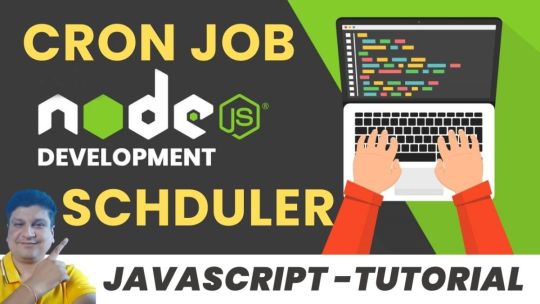
View On WordPress
#cron expression#cron expression in javascript#cron job#Cron job example#Cron job scheduler#cron job scheduler expression#cron scheduler#javascript#javascript cron job#javascript full course#javascript job scheduler#javascript tutorial#javascript tutorial for beginners#job scheduler#job scheduling#learn nodejs#node js and express js tutorial#node js cron job#node js job scheduler#node js tutorial#node.js#nodejs#nodejs cron expression#nodejs tutorial
0 notes
Text
EyeOnTask streamlines your workflow
As a business owner, managing your field service operations can be quite challenging. However, with EyeOnTask, you can simplify your field service operations, increase efficiency, and ultimately, grow your business.
EyeOnTask provides a complete field service management solution that helps you manage your entire field service operation from a single platform. You can schedule jobs, track your technicians, and manage all of your tasks in one place. This reduces the need for manual intervention, which saves you time and money.
#field#management#software#service#fieldservice#softwaresolutions#EyeOnTask#fieldservicesoftware#JobScheduler#ServiceSchedulerSoftware#Fieldworkers#fieldjobs#HVAC#plumbing#computerinstallation&repair#transportation#construction#CCTVSurveillance#PestControlling#FireSafetySoftware#Lift&EscalatorSoftware
0 notes
Text
android 중급 25강 Service tacademy
original source : https://youtu.be/VLZDGPStEp4


service가 background에서 작업은 하지만 main thread에서 수행된다.
=========================================================
.
.

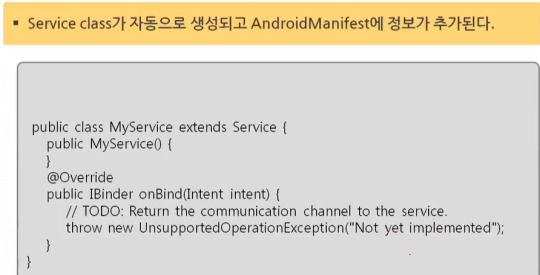
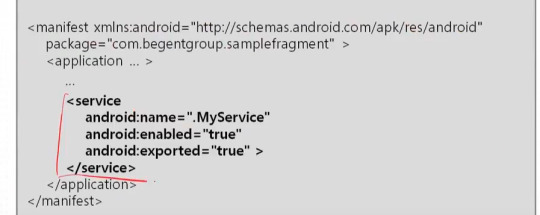
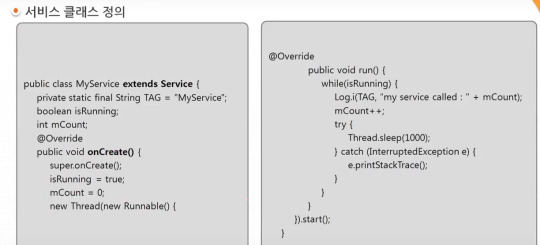
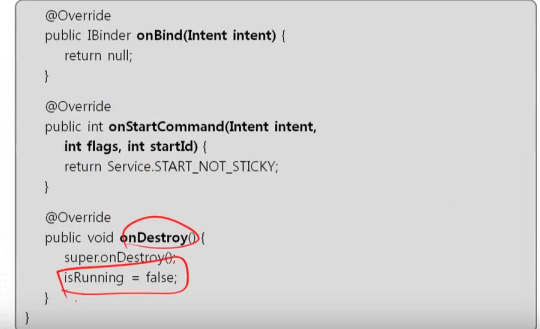

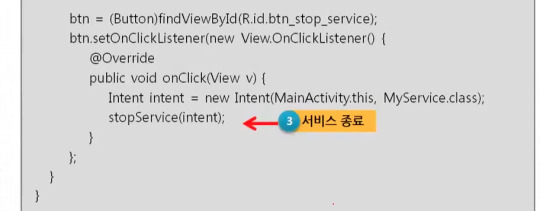
=========================================================
.
.
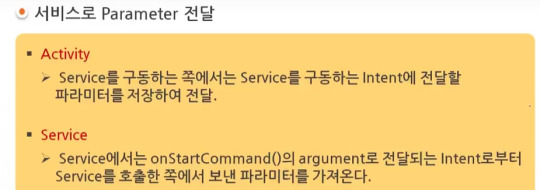
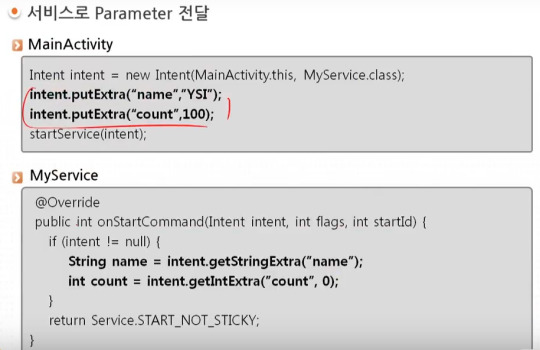
=========================================================
.
.
아래 코드에서 i.putExtra(”value”,”activity”)의 경우 data를 pending intent에 넣고 나중에 다시 activity 의 onActivityResult()에서 data.getStringExtra(”value”)를 통해 다시 되돌려 받게 된다.
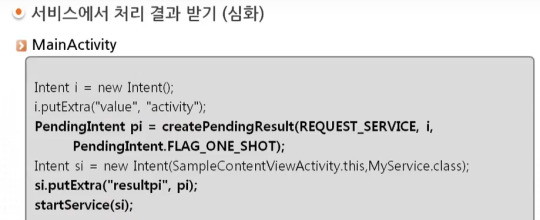
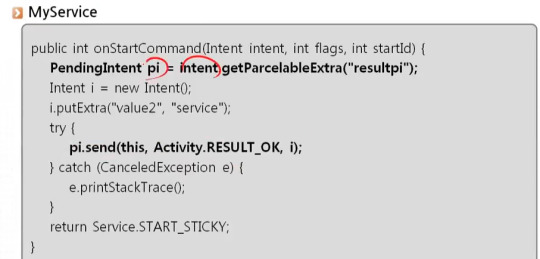
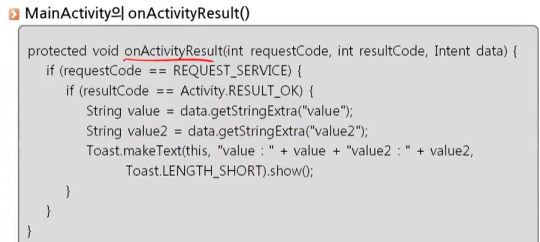
=========================================================
.
.

AIDL android interface definition language
aidl 은 interface와 작성방법이 거의비슷하다. aidl을 아래와 같이 정의하면 코드상에서 사용될때 아래와 확인할수 있듯이 Stub()을 사용할수 있게 된다. Stub()을 통해 IBinder obj를 얻을수 있고 이를 variable에 저장하고 이를 onBind()를 통해 되돌린다.
activity에서 bindService()를 통해 bound service를 시작하게 되면 service내의 onBind()가 호출되고 이 메소드 내에서 되돌려진 IBinder를 통해 activity에서 AIDL에 명시된 함수에 접근 할수 있게 되고 이를 통해 service와 소통할수 있게 된다.


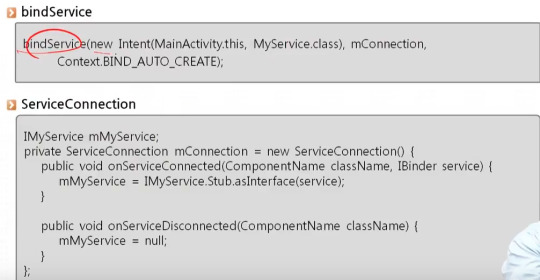
=========================================================
.
.
JobScheduler는 service의 일종이며 특정 조건에 발생한 경우 작업이 수행되는 service이다.

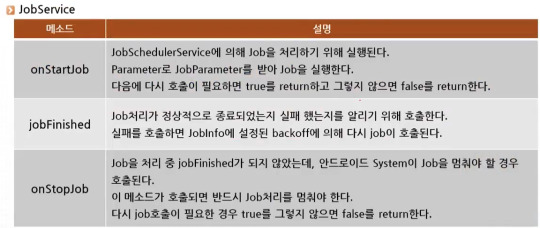
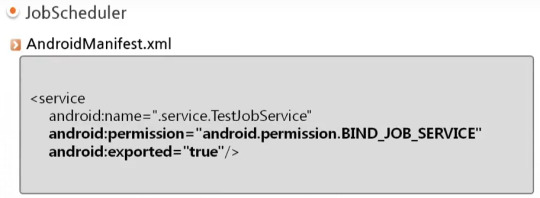
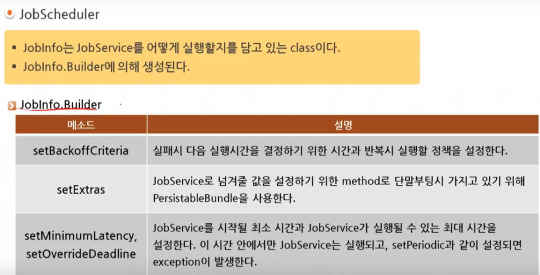

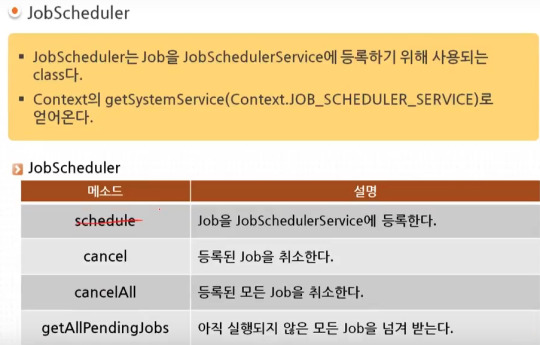

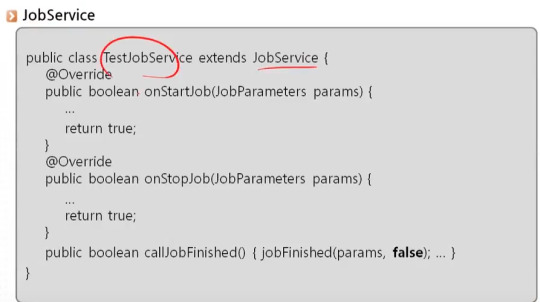
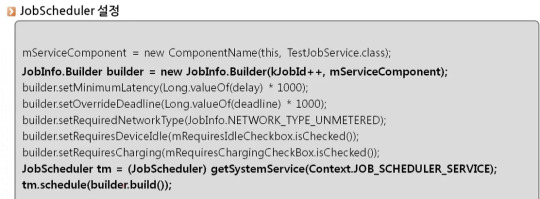
0 notes